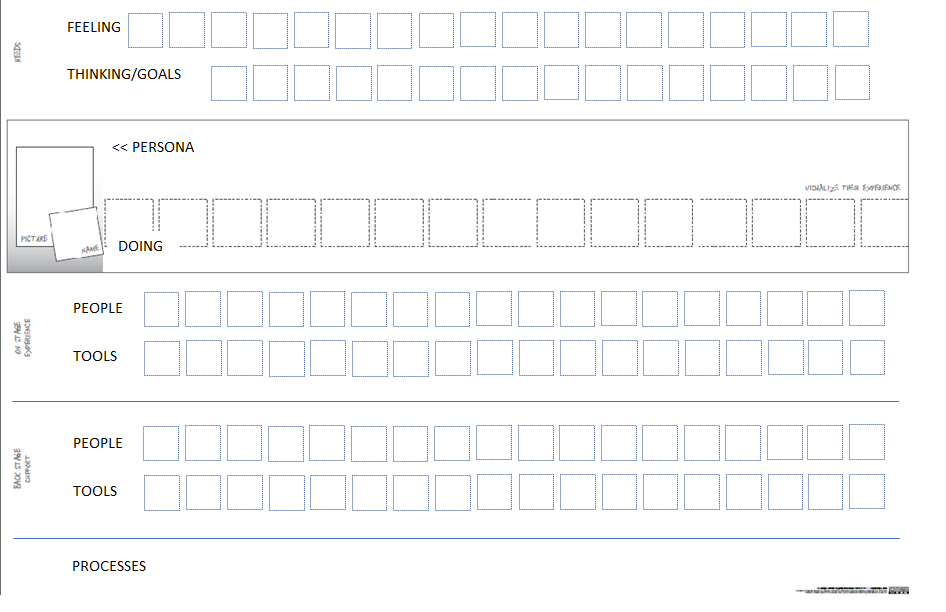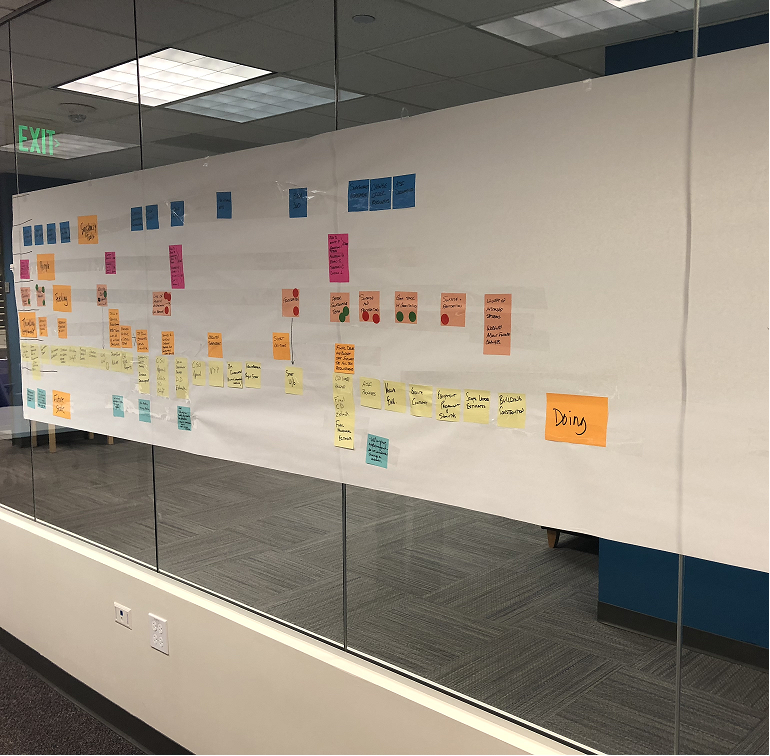Stories are a wonderful communication and teaching tool. They allow you to deliver a message that engages your audience, helps them understand what’s in it for them, and, hopefully, inspires them. But how do you get people to connect to your story and remember it?
Customer experience professionals capture the hearts and minds of their audiences through customer journey maps. They paint a picture of who the customer is, what problems she’s trying to solve, and the experience the company puts her through in order to solve her problem. They take the audience on a journey – the customer’s journey – and it humanizes the customer experience for the audience.
What is journey mapping?
Journey mapping a creative process that illustrates not only the steps customers’ take as they interact with your brand, but also their needs along the way and the emotions elicited by each step of the journey.
Journey maps depict a timeline of what customers are doing, thinking, and feeling throughout each interaction with a brand. They tell the story of the customer’s journey as she interacts with the brand, helping to build empathy for her and struggles he/she endures as the customer journeys to their desired outcome. And the maps also help you co-create better experiences with your customers.
Journey mapping is a learning exercise. The exercise reveals the story from the customer perspective, not the company’s, so it forces the company to focus on the customer. As a result, companies learn about: their customers, the experience they put them through to interact with the business, and how well (or not) they perform along the journey.

An example of a customer journey map template.
Done right, maps help companies in many ways, including to…
- Understand experiences. You can’t transform something you don’t understand, is what I like to say. Maps bring understanding. They highlight and diagnose existing issues and opportunities; at the same time, they capture what’s going well, too.
- Design experiences. Once you understand the current experience and moments of truth, maps help you prioritize and rethink existing processes and/or create new ones.
- Implement and activate new experiences. The maps become blueprints or statements of direction for the work to be done to improve and to redesign the experience.
- Communicate and share experiences. Maps are great communication and teaching tools. They can be used during onboarding, training, and other ongoing education opportunities to unite the organization around the customer, to teach employees about the current and the future experience, and to further ingrain the customer-focused culture of the business.
- Align the organization. Use the maps to get executive commitment for the CX strategy, get organizational adoption of the customer-centric focus, provide a line of sight to the customer for employees, and help employees understand how they impact the experience.
How should you start to tell this story?
With the characters, of course. Who are they? Whose story are you going to tell?
Identify the characters of your story; in other words, start by identifying the customer persona for which you’ll map a journey. A persona on its own tells a story – by definition, it is a story about the customer, who she is, what her needs are, what problems she is trying to solve, how she prefers to interact with the company, and more. You will create journey maps for each persona: different stories – different experiences – for different customers.
Next, choose which story – or the scope of the story – you’ll tell; in other words, determine which interaction or which journey you will map. Choose some Point A to Point B, a clear start point and a clear end point, for the story. You will typically select known issues or pain points – for the customer and for the business – that are low-hanging fruit to start with; next, you might select journeys based on areas of importance to your customers during which your company’s performance is known to be less than optimal (based on customer feedback).
And last, but not least, identify the objectives and the desired outcomes. Why are you mapping? What business problems are you trying to solve? What value will the map bring to the organization? What are the intended outcomes? What changes will you make as a result of its findings? And, is the organization prepared to make those changes? Is the organization ready to hear this story?

A customer journey map in the works.
Initial journey mapping considerations in a nutshell: Whose story is it? What story are you going to tell? Why this story? Why is it important? And what will you do with what you learn from this story?
The maps themselves, when developed correctly, bring the story to life, in a couple different ways:
- You walk in your customer’s shoes. The map captures the steps – in detail – that the customer takes for a specific interaction with the company.
- You understand, relate, and instantly build empathy for the customer. How the customer feels about each step is highlighted on the map, ensuring that the audience knows where the high points and the pain points occur and building empathy along the way.
- You see the data that supports what the customer is telling you. Customer feedback is also incorporated into the map, adding broader, quantitative data and perspectives to the story.
- Artifacts add visualizations that support what the customer/journey map is telling us. Artifacts include video, audio, pictures, documents, and any other item that might help the audience understand exactly what happened at each step.
I’m simplifying the process quite a bit, but once we know the current story of the customer’s experience, we can then move into writing their future story, i.e., designing the experience of tomorrow. We call this Future State Mapping.
During future state mapping, customers tell us the story of the ideal experience they’d like to have. We incorporate their ideas into the map and take those back to the group who will need to consider the feasibility of transforming those ideas into the new experience.
The journey map – the story of the customer’s experience – is shared with the organization to:
- help employees understand the customer and her interactions with your company
- show employees how they impact the customer and the experience
- convey the importance of being a customer-focused and customer-centric organization
- align around a common cause and a common purpose
- break down silos by highlighting how various departments are involved in any one interaction a customer has with the organization
- build empathy and understanding for the customer
- achieve a single view of the customer, and
- improve the customer experience
When the story is created, told, and shared, the business has the information it needs to be more proactive in developing products, processes, and services that better meet their customers’ needs.
So as you define your brand story, take the time to truly understand your customer personas. Then map their journey to create greater empathy for their story, which will help you connect your world to their world.
Learn more about customer journey maps and how you can create one for your brand in the seventh issue of the Business of Story magazine.









at 3:01 pm
[…] originally wrote today’s post for Story of Business. It appeared on their blog on August 3, […]
at 10:00 pm
[…] originally wrote today’s post for Story of Business. It appeared on their blog on August 3, […]